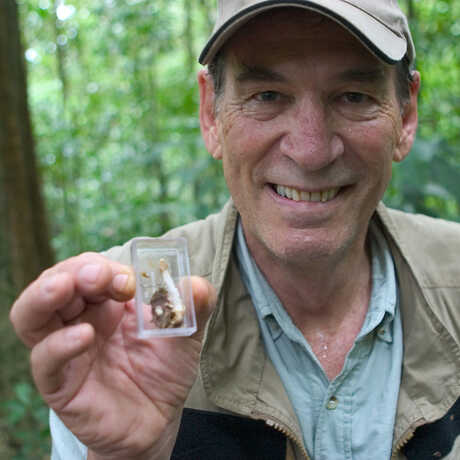My principal research interest concerns the systematics of grenadiers, a group of more than 400 deep-sea fishes related to the codfish. Grenadiers are found in all oceans, but 80-90% of the species are confined to subtropical and tropical seas. Most grenadiers live on the continental slope at depths between 200 m and 2000 m, but some range to below 6000 m. A few species are commercially exploited by large trawlers dragging at depths often exceeding 1000 m. The group seems to have evolved in the deep sea, as no shallow-water close relatives are known. Fossils support their existence since Cretaceous times. The adaptations, diversity, and distributions of these fishes present numerous intellectual challenges that spur my interest in the evolutionary processes that made them what they are.
My preoccupation with grenadiers began in the early 1960s while employed as a fishery biologist working in waters of the tropical western Atlantic. At that time grenadiers were poorly known and infrequently collected. Only a few of the 30 or 40 species we commonly encountered were identifiable, although they were an important component of the fauna we were trying to assess.
In pursuit of grenadiers, I have cruised on oceanographic and fishery vessels over most of the western tropical Atlantic, from Cape Hatteras throughout the Gulf of Mexico and Caribbean Sea to northern Brazil; the eastern tropical Atlantic off Angola; the Pacific coast of North America from the Bering Sea and the westernmost Aleutian Islands to southern California; to the Hawaiian Islands, the Philippines, New Caledonia, and the Norfolk Ridge and Lord Howe Rise north of New Zealand.
Many of my previous (and still-continuing) studies have been on western Pacific, Australian, and Indian Ocean grenadiers. Papers describing the fauna of these areas were published in collaboration with ichthyologists from Australia, Great Britain, Israel, Japan, New Zealand, Russia, and Taiwan. A recent focus has been a study of the marine fishes of Angola, based on collections I made in 2005 and 2007 aboard the Norwegian fishery research vessel Dr Fridtjof Nansen.

